2018 Northwest Fish And Wildlife Year In Review, Part III
As 2018 draws to a close, we’re taking our annual look back at some of the biggest fish and wildlife stories the Northwest saw during the past year.
While the fishing and hunting wasn’t all that much to write home about, boy did the critters and critter people ever make headlines!
If it wasn’t the plight of orcas and mountain caribou, it was the fangs of cougars and wolves that were in the news — along with the flight of mountain goats and pangs of grizzly bear restoration.
Then there were the changes at the helms, court battles, legislative battles and more. Earlier we posted events of the first five months of the year, and then June through September. Below we wrap up with October through December.
OCTOBER
Oregon began offering big game preference points instead of just cold, hard cash for those who help state troopers arrest or cite fish and wildlife poachers. The new option in the Turn In a Poacher program awards five points for cases involving bighorns, mountain goats, moose and wolves; four for elk, deer, antelope, mountain lions and bears. While the points all have to go to either elk, buck, antlerless deer, pronghorn or spring black bear series hunts, it significantly raises the odds of being drawn for coveted controlled permits.
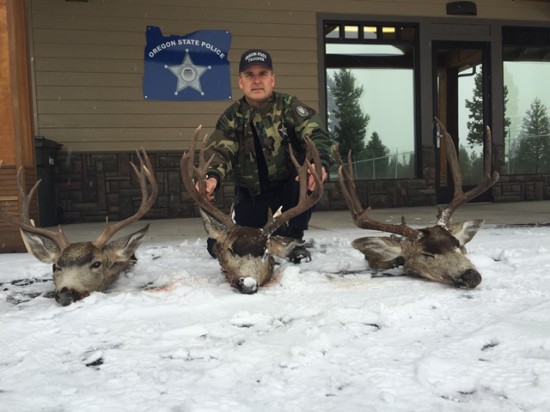
The lowest catch station recorded the highest haul when the Columbia-Snake 2018 pikeminnow sport-reward program wrapped up this fall. “It is the first time in the Pikeminnow Program’s 28-year history that the Cathlamet station has been the number one location,” noted Eric Winther, who heads up the state-federal effort aimed at reducing predation on salmonid smolts. With 25,135 turned in there, Cathlamet accounted for 14 percent of the overall catch of 180,309 pikeminnow this year. Boyer Park produced the second most, 22,950, while usual hot spot The Dalles was third with 22,461, less than half of 2017’s tally.
Using DNA from northern pike, USFS researcher Dr. Kellie Carim turned the widespread assumption about where the fish that have invaded Washington came from on its head. “The history we’ve told ourselves, the simplest explanation, is that the fish are flowing downstream from Western Montana,” Carim told us in early fall. “However, what the genetic analysis says is that those in Lake Roosevelt and the Pend Oreille River are closely related to those in the Couer d’Alene drainage.” In other words, a bucket biologist or biologists drove them between the watersheds. Also on the invasive species front, earlier in the year, scientists began to suspect that Sooke Harbor was not the source of the European green crabs showing up in Puget Sound waters but from somewhere on the Northwest’s outer coast.
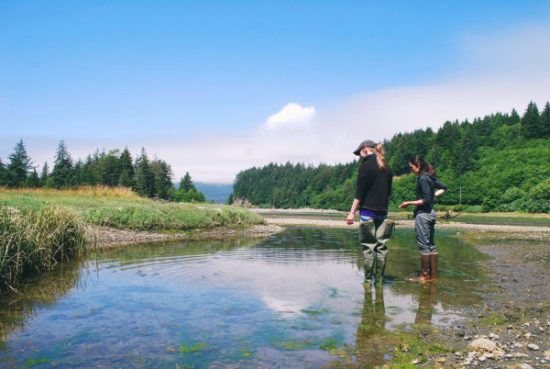
Oregon and Washington’s Fish and Wildlife Commissions were urged not to roll back the Columbia River salmon reforms by no less than the former governor who got the ball rolling. “There’s absolutely no reason to change right now, it makes no sense,” said Oregon’s John Kitzhaber in one of several short videos that came out ahead of indepth reviews for the citizen panels.

With salvaging roadkilled deer and elk in Oregon set to begin Jan. 1, 2019, the Fish and Wildlife Commission adopted regulations for how the program will work. It’s similar to Washington’s, except that antlers and heads must be turned in to any ODFW office (here are addresses and phone numbers of the two dozen across the state) within five business days and Columbian whitetail deer may be salvaged, but only in Douglas County, where the species was declared recovered in 2003.
Idaho Fish and Game Commissioner Blake Fischer resigned after a distasteful photo of him with a dead “family of baboons” surfaced following an African safari with his wife. Fischer initially defended his actions, telling the Idaho Statesman, “I didn’t do anything illegal. I didn’t do anything unethical. I didn’t do anything immoral.” In accepting Fischer’s requested resignation, Gov. Butch Otter stated, “Every member of my administration is expected to exercise good judgment. Commissioner Fischer did not.”

This year’s return of coho to the Columbia River was woeful at best, but there was a glimmer of good news when the Nez Perce announced that the first adult in more than 50 years returned to Northeast Oregon, thanks to a joint tribal-ODFW release of half a million smolts in March 2017. At least 125 had arrived at a weir on the Lostine River as of earlier this month, and tribal fisheries manager Becky Johnson estimated there were 800 more still on their way at that point.

With small, 2- to 3-inch razor clams dominating the population in Clatsop County’s sands, Oregon shellfish managers with support from the public decided to postpone harvesting any until this coming March, in hopes they would be larger by then. On the north side of the Columbia River, Washington’s Long Beach will only see a limited opener this season due to low salinity levels in winter 2017 that affected survival and led to a higher concentration of small clams.

WDFW’s new Director Kelly Susewind hit the highway, the airwaves and the interweb to flesh out his thinking on hot-button fish and wildlife issues, set the tone for what his priorities are going forward, and listen to the needs of sportsmen and Washington residents. He hosted half a dozen meetings across the state, appeared on TVW’s Inside Olympia and did a webinar as the agency tried to build support for its $67 million ask of the legislature in 2019.
It wasn’t just small clams on the Oregon Coast sparking concerns — low early returns and catches of fall Chinook led ODFW to restrict fishing from the Necanicum to the Siuslaw, closing all the rivers above tidewater and reducing limits in the bays from three to one for the season. When subsequent surveys began to show more fish arriving on the spawning grounds, sections of the lower Siletz then Alsea and Yaquina Rivers were reopened, but further south, it wasn’t until late November before ODFW was able to lift gear restrictions on the low-flowing Chetco and Winchuck Rivers.
NOVEMBER
Western Washington tribes launched an ambitious, coordinated, long-term effort to identify and restore key salmon habitats as well as gauge land-use decisions in the region. The Northwest Indian Fisheries Commission’s Tribal Habitat Strategy was described by chair Lorraine Loomis as an “effort … based on what we know is actually needed to achieve ecosystem health, not what we think is possible to achieve given current habitat conditions.”

Cattle depredations that seemed like they’d never end in Northeast Washington led to essentially three different lethal wolf removal operations ongoing at once, two by WDFW targeting all the remaining OPT wolves and one Smackout Pack member, and one by a producer for any Togo wolves in their private pastures. By year-end at least four wolves had been killed by state shooters in hopes of reducing livestock attacks, and the Capital Press reported at least 31 calves and cows had been confirmed to have been either killed or injured by wolves in 2018, “more than double any previous year.”

Significantly increasing Chinook abundance to help out starving orcas was among the key recommendations Washington’s Southern Resident Killer Whale Task Force voted to forward to Governor Jay Inslee after months of discussion and public comment. Members also urged suspending southern resident killer whale watching for all fleets — commercial, recreational, kayak, rubber dingy, etc., etc., etc. — for the next three to five years. The recommendations were generally supported by sportfishing reps who took part in the task force’s work. “Production needs to be ramped up immediately, and follow the recovery/ESA sidebars in the recommendations,” said Liz Hamilton of the Northwest Sportfishing Industry Association, who also expressed concern about “organizations who will file lawsuits to fight increased production no matter how thoughtfully done and no matter how dire the need.”
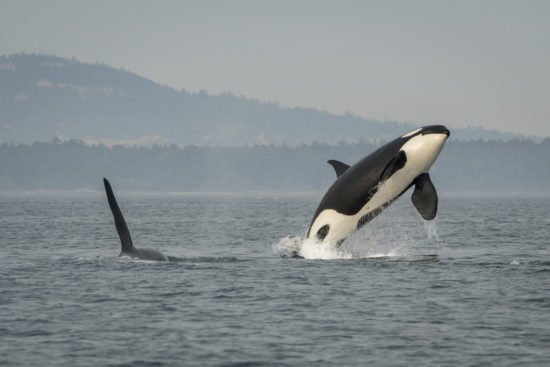
IDFG Director Virgil Moore announced that he was retiring in January after eight years at the helm of Idaho fish and wildlife management and a four-decade-long career in the field, including a year as ODFW’s director. “Working together, Fish and Game and our wildlife resources are in excellent shape and ready to be handed off to new leadership,” he said in a press release. Fellow Fish and Game honcho Ed Schriever was named as Moore’s replacement.
Federal researchers found that one top way to recover Chinook in Puget Sound streams is to restore side channels. Providing space for the young ESA-listed fish to grow as well as shelter from flood flows adds complexity to river systems, increasing its potential value as habitat. The work, some of which was done on the Cedar River, could help answer where and how to get the best bang for restoration dollars. In a related story, for the first time since the project wrapped up in 2014, a pair of kings chose to spawn in a portion of a Seattle stream that had been engineered for salmon to dig redds. “That’s a vote of confidence!” said a utility district biologist.

With the threat of a federal lawsuit hanging over their heads, the Idaho Fish and Game Commission voted in mid-November to suspend steelhead season in early December. IDFG’s permit to hold the fishery had expired nearly 10 years ago and other priorities had kept NMFS from issuing a new one, providing an opening for yet another low-hanging-fruit lawsuit from the usual suspects. “The loss of that opportunity, even temporarily, due to a lawsuit and unprocessed permit is truly regrettable,” said Virgil Moore in a letter to Idaho steelheaders. The pending closure didn’t affect Washington fishermen angling the shared Snake, and it led one of the six litigant groups to subsequently back out, saying its goal of spurring the feds into action had been achieved. But on the eve of the shutdown, an agreement was reached between a newly formed group of anglers and towns, Idaho River Community Alliance, IDFG and the other five parties. It kept fishing open, closed stretches of the South Fork Clearwater and Salmon, and included voluntary measures.

The federal Fourth National Climate Assessment, released over Thanksgiving weekend, painted a rough go of it for fish, shellfish and wildlife in the Northwest. It projected that Washington salmon habitat will be reduced by 22 percent under a scenario that includes continued high emissions of greenhouse gases, razor clamming would decline “due to cumulative effects of ocean acidification, harmful algal blooms, higher temperatures, and habitat degradation,” and that more management to ensure sufficient waterfowl habitat would be needed. The report, required by Congress, did say deer and elk may actually thrive due to less winterkill and improving habitat because of increased wildfires, but could also be impacted by “increases in disease and disease-carrying insects and pests.”
ODFW launched its new electronic license program, so easy that even hook-and-bullet magazine editors can (eventually) figure it out. Essentially, the app allows sportsmen to carry an e-version of their fishing and hunting licenses on their phones, etc., as well as tag critters and fill in punch cards with an app that works even offline in Oregon’s remote canyons.

In what would also be a continuing news story in the year’s final month, ODFW received federal permission to lethally remove as many as 93 California sea lions annually at Willamette Falls and in the lower Clackamas. “This is good news for the native runs of salmon and steelhead in the Willamette River,” said ODFW’s Dr. Shaun Clements, whose agency had estimated that if nothing were done, there was a 90 percent chance one of the watershed’s wild winter steelhead runs would go extinct. “We did put several years’ effort into non-lethal deterrence, none of which worked. The unfortunate reality is that, if we want to prevent extinction of the steelhead and Chinook, we will have to lethally remove sea lions at this location,” he said in a press release.
And near the end of the month, the U.S. House of Representatives voted 196 to 180 to fully delist gray wolves in the Lower 48. But that was as far as the Manage our Wolves Act, co-sponsored by two Eastern Washington Republicans, was going to get, as at the end of the year it went nowhere in the Senate’s Committee on Environment and Public Works and the incoming chair of the House Natural Resources Committee flatly told a reporter that the panel won’t be moving any delisting legislation while he is in charge over the next two years. Meanwhile, WDFW and the University of Washington began year three of predator-prey research across the northern tier of Eastern Washington.

DECEMBER
Poor fishing up and down the West Coast in recent years was among the factors that forced the owners of Ollie Damon’s reel repair shop in Portland to close up for good this month, ending the run of a famed name that first opened for business in the late 1940s. “It’s sad for us but we can’t work forever,” said Rich and Susan Basch who bought the shop in the 1990s and used to service as many as 5,000 to 6,000 reels annually, and who said that they’ll miss their customers “immensely” as they also retire.

We’ll know a lot more about 2019 salmon expectations later in winter, but the year’s first forecasts came out in early December, with Columbia River managers expecting an overall run of 157,500 springers, 35,900 summer kings, and 99,300 of the red salmon, all below 10-year averages but no surprise given recent ocean conditions. The outlook for upriver brights is similar to 2018, with tule Chinook below the 10-year average, but with spring’s offshore survey finding good numbers of young coho in the ocean and a strong jack return to the river this fall, there is some potential good news for silver slayers.
The poaching of one of Oregon’s rare moose north of Enterprise in November led to a handsome reward offer of not only $7,500 at last check but a guided elk hunt on the nearby Krebs Ranch, a $3,500 value in itself. “The poaching of a moose is a tragic thing,” said Jim Akenson of the Oregon Hunters Association, chapters of which stepped up to build the reward fund. “Especially because our moose population is low – fewer than 70 in Oregon.” This is at least the second moose poached in Northeast Oregon in recent years. Thadd J. Nelson was charged in early 2015 with unlawfully killing one in mid-2014. He was later killed by robbers.
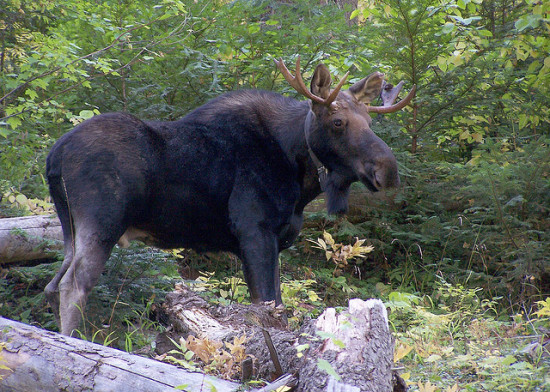
Washington Governor Jay Inslee touted an “unprecedented investment” of $1.1 billion to recover orcas and their key feedstock — Chinook — in his proposed 2019-21 budget. It includes $12 million for WDFW to maximize hatchery production to rear and release an additional 18.6 million salmon smolts, a whopping $205 million boost for DOT to improve fish passage beneath state roads, and $75.7 million to improve the state’s hatcheries (hopefully testing generators more frequently!). Inslee’s budget, which must still be passed by lawmakers, also includes the fee increase but $15 million WDFW asked for for conservation and habitat work was pared down to just $1.3 million for the former.
With the significance of Chinook for orcas in the spotlight of course a mid-December windstorm would knock out power to a state hatchery, and when the backup generator failed to immediately kick in, around 6 million fall and spring fry died. That angered fishermen and killer whale advocates alike, and led to a rare statement by a WDFW director, Kelly Susewind on the “painful loss.” As an outside investigation is launched into what exactly what went wrong, up to 2.75 million fish from a mix of state, tribal and tech college hatcheries were identified as possible replacements, pending buy-in from several more tribes.

Federal, state and tribal officials agreed to a three-year trial to see if increasing spill down the Columbia and Snake Rivers can “significantly boost” outmigrating salmon and steelhead smolt numbers. The agreement came after early in the year U.S. District Court Judge Michael Simon ordered spill to occur and Eastern Washington House of Representatives members tried to kill it. Testing begins this coming April — “It can’t happen soon enough,” said NSIA’s Hamilton.
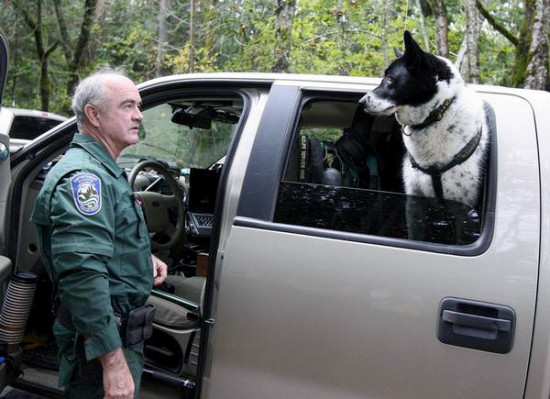
And finally, and in probably the best news of the whole damn year — which is why we saved it to last, but also because it happened so late in 2018 — the Endangered Salmon Predation Prevention Act was signed into law by President Trump after zipping through the Senate and House this month. With bipartisan leadership from Northwest lawmakers and support from the DFWs, tribes and fishing community among others, the bill essentially provides up to five one-year permits to kill as many as 920 California sea lions and 249 Steller sea lions in portions of the Columbia River and its salmon-bearing tributaries. Not that that many likely will be taken out, but this should FINALLY help address too many pinnipeds taking too big a bite out of ESA-listed stocks and help keep one of their new favorite targets, sturgeon, from ending up on the list too.

And with that, I’m calling it a year on this three-part year in review — read the first chunk, covering January through May here, and the second, June through September, here.
Take care, and happy new year!
AW
NWS
